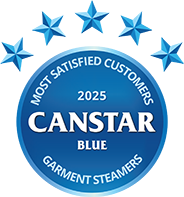Our review compares garment steamer brands on customer satisfaction, so you can find out what other Aussies think about the compared brands before you go ahead with a purchase. Think of it as like asking hundreds of your closest mates which garment steamer brand they think is best!
Canstar Blue surveyed 411 Australians for their feedback on the garment steamer brand(s) they’ve purchased in the last three years.
The winning brand is the one that receives the highest overall satisfaction rating once all the scores from the overall satisfaction criteria are combined and averaged.
Brands must have received at least 30 responses to be included, so not all brands available in the market have been compared in this survey. The brands rated in this survey are listed below in order of best overall satisfaction.
Find more detailed information on our Most Satisfied Customer methodology.
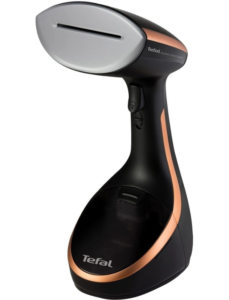
Tefal is a home goods brand most known for their non-stick pots and pans, but Tefal also makes rice cookers, electric grills, air fryers and more. Tefal’s garment steamer range includes features such as a 15 second warm up time, lint and dust removing pads and compact design.

This article was written by Canstar Blue Home & Lifestyle Content Producer, Rachel Bollerman. Rachel graduated with a Bachelor of Communications, majoring in Journalism at the Queensland University of Technology in 2021. She has worked in public relations, marketing and communications roles at Jessica Cotton PR & Marketing and the Institute for Urban Indigenous Health . Gaining experience in broadcast journalism and blog writing, Rachel has also interned at 4ZZZ Community Radio and Fishburners.
When she’s not working, Rachel enjoys doing arts and crafts projects at home, watching true crime and spending time with friends. You can follow Rachel on LinkedIn.

Samantha Howse is Canstar Blue’s Consumer Research Specialist, coordinating the consumer research program behind our customer satisfaction awards across Canstar and Canstar Blue in Australia and New Zealand. Sam has earned a Bachelor of Business (Marketing) from Griffith University and, with seven years in market research and two years in marketing, she is experienced in survey design, implementation and analysis, coupled with an understanding of marketing principles and best practice.
Here are the past winners from Canstar Blue’s garment steamer ratings:
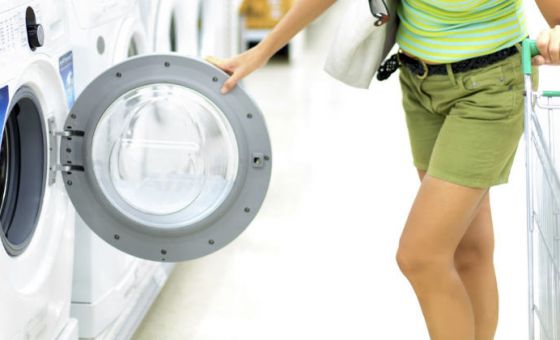
Appliances - March 6th
They may all perform the same basic function, but there are three main types of clothes dryers. Find out which is best for your home.
– Read more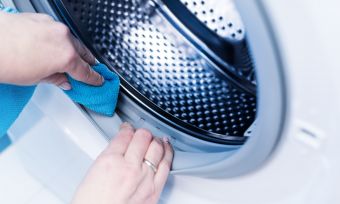
Appliances - February 17th
Who cleans the cleaner? Washing machine cleaners cost under $10 and can help keep your washing machine performing well. Find out more at Canstar Blue.
– Read more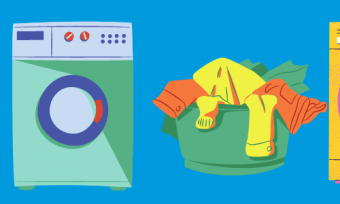
Appliances - February 29th
When it comes to buying a new laundry appliance, one of the most important decisions is whether to choose a front loader or a top loader washing machine. So, which is best? We cover everything …
– Read more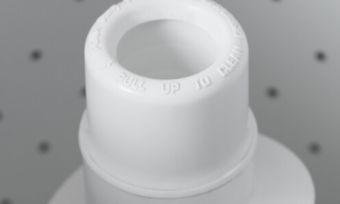
Appliances - July 24th
There are a whole lot of elements that make up a washing machine and contribute to how your clothes are cleaned. An agitator is another one of these elements that helps to clean your clothes, …
– Read more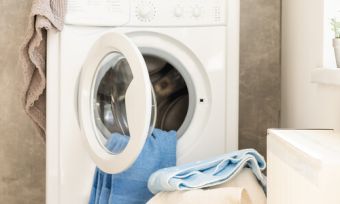
Appliances - June 12th
Not everyone has an outdoor space to dry their clothes, so choosing a dryer is the next best option, but where do you start to look when you want to buy? Two popular models of …
– Read more^By clicking on a shop online, compare now, buy online, more details, go to site or check latest prices button, you may leave Canstar Blue and be taken to a referral partner to compare. Canstar Blue may be paid for this referral. You agree that Canstar Blue’s terms and conditions apply to this referral. If you click on a brand that is not a referral partner, you will be taken to a brand page on Canstar Blue.
Canstar Blue may earn a fee for referrals from its website tables, and from sponsorship of certain products. Fees payable by product providers for referrals and sponsorship may vary between providers. Generally, sponsorship fees are payable in addition to referral fees. Sponsored products are clearly disclosed as such on website pages. They may appear in a number of areas of the website such as in comparison tables, on hub pages and in articles. Sponsored products may be displayed in a fixed position in a table, regardless of the product's rating, price or other attributes. The table position of a Sponsored product does not indicate any ranking or rating by Canstar. The table position of a Sponsored product does not change when a consumer changes the sort order of the table. For more information please see How Are We Funded.
*Prices correct as of publication date.
^By clicking on a shop online, compare now, buy online, more details or check latest prices button, you may leave Canstar Blue and be taken to a referral partner to compare. Canstar Blue may be paid for this referral. You agree that Canstar Blue’s terms and conditions apply to this referral. If you click on a brand that is not a referral partner, you will be taken to a brand page on Canstar Blue.
Canstar Blue may earn a fee for referrals from its website tables, and from sponsorship of certain products. Fees payable by product providers for referrals and sponsorship may vary between providers. Generally, sponsorship fees are payable in addition to referral fees. Sponsored products are clearly disclosed as such on website pages. They may appear in a number of areas of the website such as in comparison tables, on hub pages and in articles. Sponsored products may be displayed in a fixed position in a table, regardless of the product's rating, price or other attributes. The table position of a Sponsored product does not indicate any ranking or rating by Canstar. The table position of a Sponsored product does not change when a consumer changes the sort order of the table. For more information please see How Are We Funded. Payment of fees for ads does not influence our Star Ratings or Awards.
*Prices correct as of publication date.
